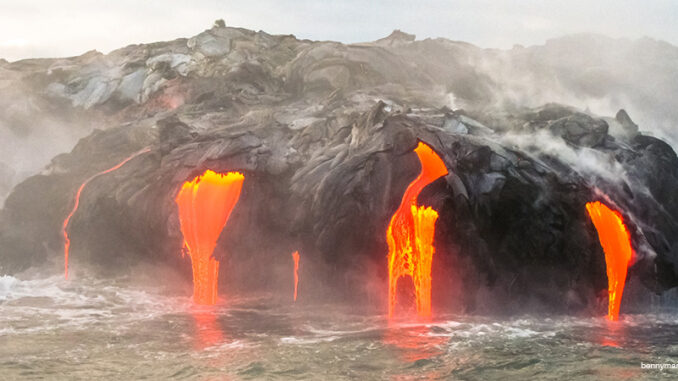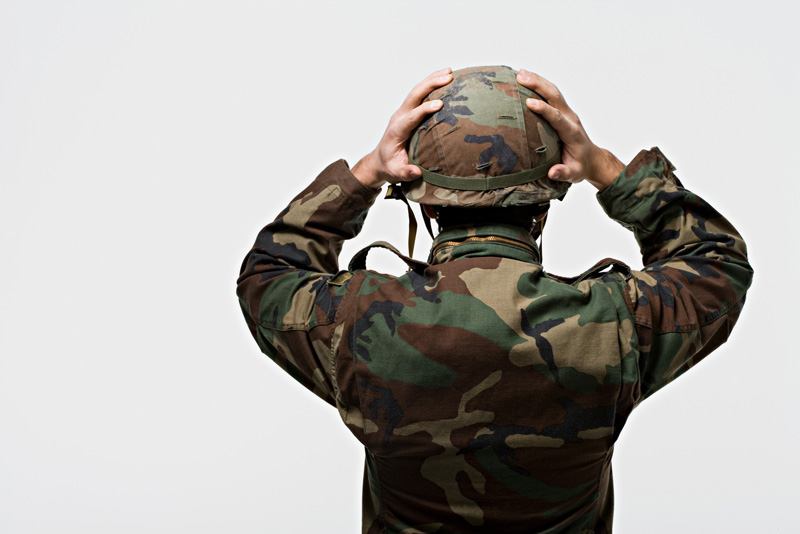
Hawaiian Volcano Still Going Strong
Mt. Kilauea, one of the world’s most active volcanoes, has been erupting on Hawaii’s Big Island since May 3. Devastation is widespread: homes have been engulfed by flames, roads have split open, power lines are down, and vegetation has been destroyed. Tourism–the island’s number-one industry–has fallen by almost 50 percent. Luckily, no one has been killed, though Hawaiian authorities have warned the 200,000 residents of the islands to be ready to evacuate at any time.
As the volcanic explosions move into the fourth week, the potential danger and health risks from Mt. Kilauea continue to grow. The lava flow has now begun to reach the ocean. When the burning lava hits the cold ocean water, it produces plumes of toxic steam, called “laze.” These plumes consist of hydrochloric acid, steam, and fine glass particles, which can be damaging to anyone who breathes it in. Another threat comes from the nearby Puna Geothermal Venture Plant, which powers one-fourth of the island. Lava has begun to encroach on Puna’s property. If it reaches the plant, it could trigger the release of poisonous hydrogen sulfate gas, which is both toxic and flammable. For now, the plant has taken what precautions it can by removing flammable material from its wells and filling them with cold water. But only time will tell how deadly this situation could become.
Even after three weeks, Mt. Kilauea shows no sign of slowing down. In fact, a series of explosions from the same volcano in 1955 lasted 88 days.
Dig Deeper Mt. Kilauea is considered one of the world’s most dangerous volcanoes. Using Internet resources, create a time line of its eruptions over the past century.
New Ways to Protect Soldiers
By now, most Americans are familiar with the devastating effects that combat can have on the brains of soldiers, as well as on their bodies. During the recent wars in Iraq and Afghanistan, the military began paying closer attention to the effects on soldiers of Traumatic Brain Injury, or TBI. Blasts from enemy roadside bombs could leave a service member looking completely normal on the outside, even while the blast from the bomb had caused permanent injury to his or her brain. Now, the military is turning to examining a different culprit of TBI: our own weapons.

Certain shoulder-mounted weapons that fire a heavy-duty blast–such as the AT4 and the Carl Gustaf–can give off a blast wave as powerful as the one that comes from detonating a small bomb. And they are doing it inches from a service member’s brain. Soldiers complain that firing the weapons feels like getting punched in the face. They also report symptoms such as headaches and memory loss.
So now the military is looking at possible ways to protect soldiers from this kind of damaging exposure. Possible solutions to consider include: specialized protective helmets; putting limits on the number of times a soldier can fire one of these weapons; and even modifying the weapons themselves. Military researchers are also using new technology to monitor soldiers’ blast exposure during training sessions. If their exposure gets too high, trainers can immediately pause the session to address the problem.
What Do You Think? In your opinion, should the U.S. military continue using heavy-duty blast weapons if there’s a chance they could be causing injury to American soldiers? Explain your point of view.
First Female Director of CIA Confirmed by Senate
Last Thursday, the Senate confirmed Gina Haspel as the new CIA director. She will replace Mike Pompeo, who was made Secretary of State in March of this year.
Haspel, who is 61 years old, was an undercover CIA operative for thirty-two years, until being appointed to the position of Mike Pompeo’s deputy director last year. She is a highly praised operative who was stationed first in Africa, then held twenty different positions within the agency during her career as a secret agent.
However, Haspel’s nomination–ike most high officials nominated under the Trump administration–was controversial. On the one hand, she will now become the first woman to ever serve as director of the CIA. But on the other hand, during her years undercover, she ran a prison in Thailand where officers tortured suspected al-Qaeda militants using waterboarding and other methods. To make matters worse, she later sent a message asking for the tapes of the waterboarding to be destroyed.
As predicted, most Republican senators were in favor of Haspel’s nomination, while most Democrats were not. At her confirmation hearing on May 9, Democratic senators questioned Haspel about her use of torture. She said that she wouldn’t initiate any new torture programs, but she didn’t speak out against the ones that she facilitated in the past. The following week, she wrote a letter in which she reversed positions, saying that torture is ineffective and that the U.S. shouldn’t have engaged in it. After that letter was revealed, several Democrats changed their mind and decided to approve Haspel after all, giving her enough votes to be officially confirmed.
